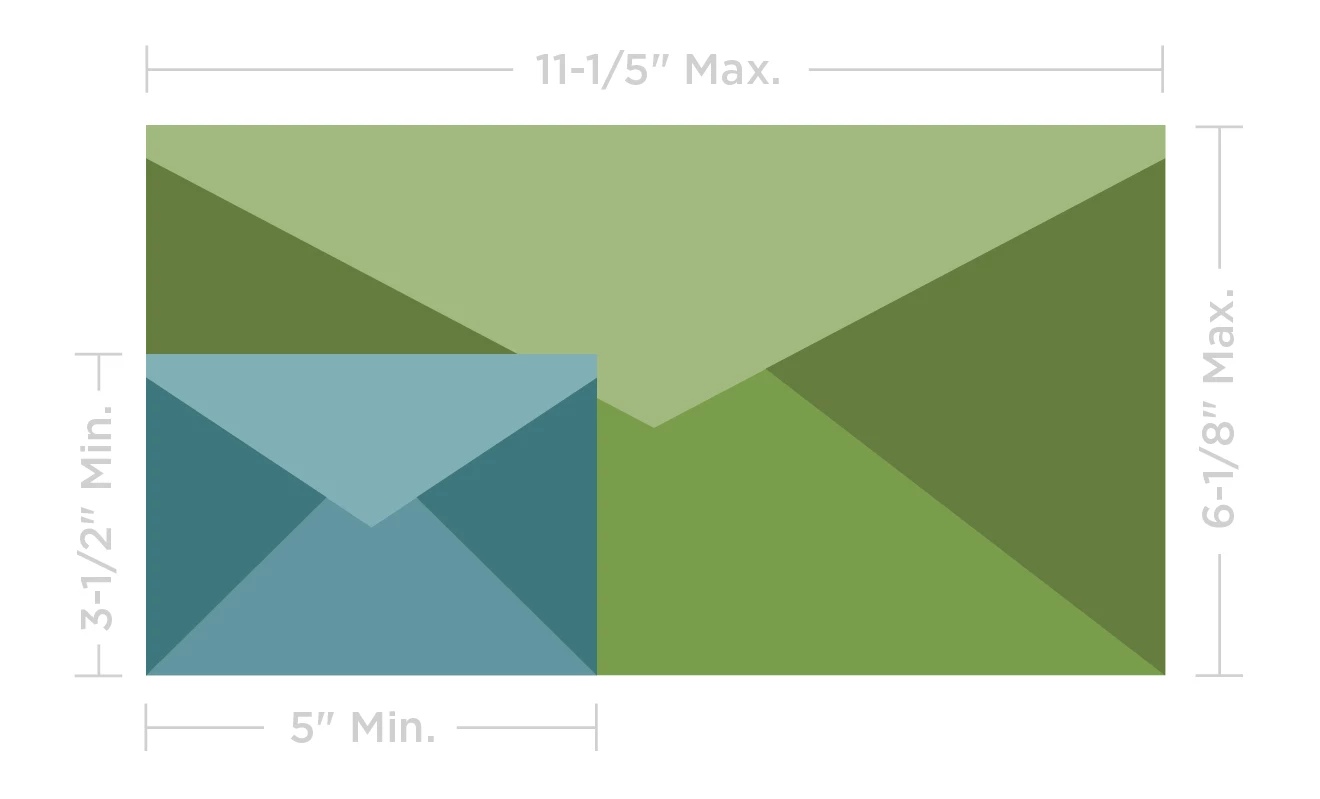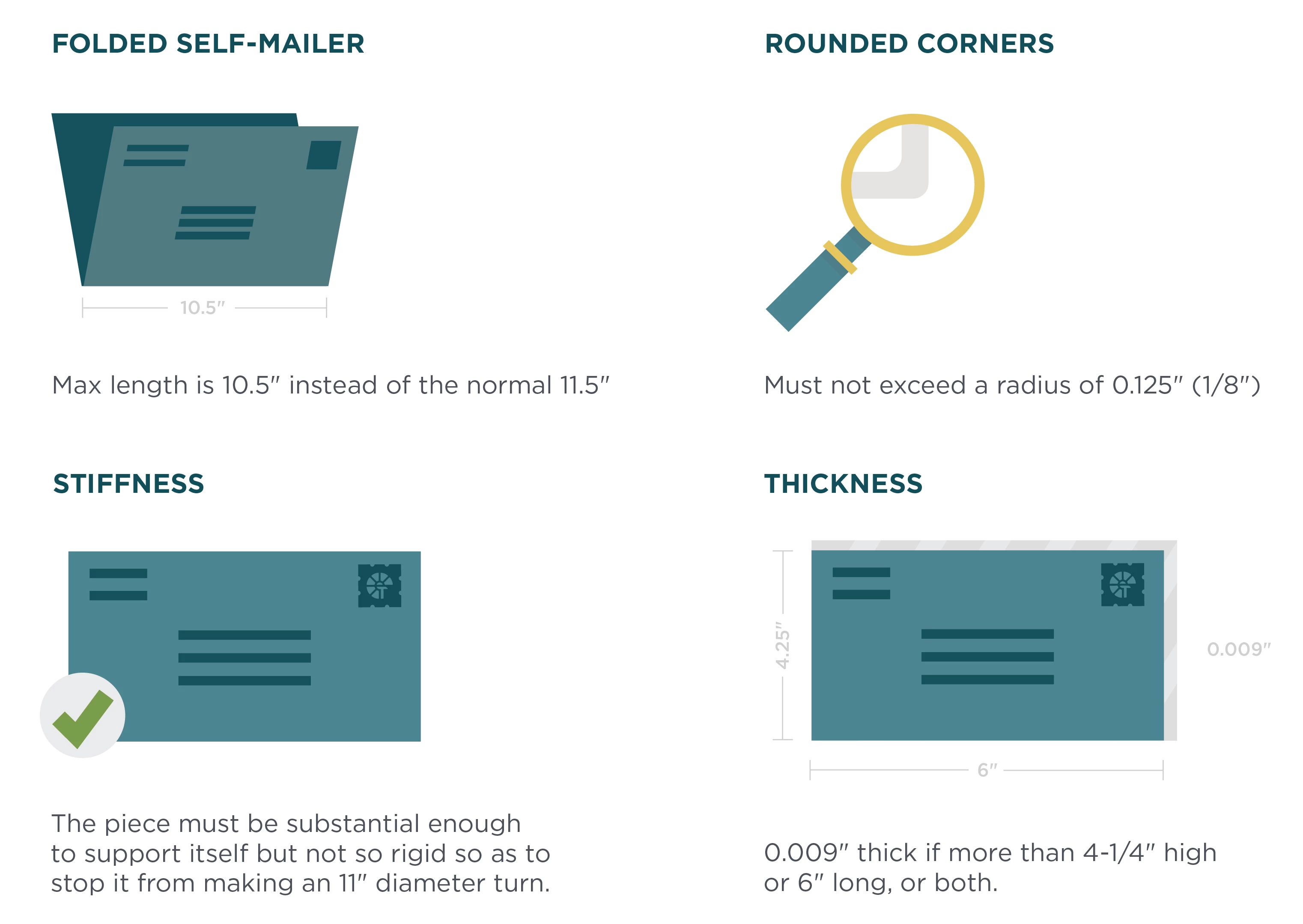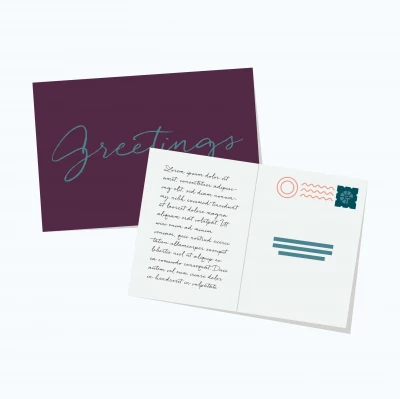I'd Like to Mail a Letter

Nathan Trevett
| 4 min read
“I'd like to mail a letter.” That sounds like a simple enough request, but in order to be successful it is important to understand what the United States Post Office considers a letter. The reason this definition is so important is that when the USPS rules are violated the cost to mail a piece can double, triple, or it may even become non-mailable.
At a top level, the post office has three basic classifications of mail: letter, flat, and parcel. In this article we'll discuss the classification of letter, which may not be what you think.
A “letter,” as defined by USPS must be at least 5 inches but no more than 11.5 inches wide. It must be at least 3.5 inches but no more than 6.125 inches tall. It’s thickness cannot exceed 0.25 inches and must be of consistent thickness throughout without being too floppy or too rigid. Whether it is in an envelope or just a postcard, if those requirements are met it should be a letter... unless the piece is folded then we have to start over again.
Below we will work through the standard features of a letter but there are many exceptions that can sneak up and cause problems, so it is always best to check with your Trevett’s team when designing your mail piece.
Size requirements
A letter must be rectangular, with four square corners and parallel opposite sides.
Letter dimensions

NOTE: The thickness requirement goes up to 0.009 inches if the piece is more than 4-1/4 inches high or 6 inches long.
Aspect ratio

Aspect ratio is another major factor in a piece being able to mail as a letter. Aspect ratio is the length divided by the height. The aspect ratio must be between 1.3 and 2.5 to classify as a letter. If we put it in math terms it looks like this:
Length
1.3 > ------------- > 2.5
Height
This means that a square piece (aspect ratio of 1) can never mail as a letter. Neither can a long rectangular piece that is more than 2.5 times longer than it is tall (for example a 12x4 which has a ratio of 3).
Address orientation
The Post Office determines which dimension is length and which is height by the direction of the mailing address on the card.
In the first image below the address is going in the long direction of the card so the long direction is the length (which is relatively standard). In the next image the address is in line with the short edge of the mail piece so it would have to mail as a “flat” rather than a “letter” which would incur a substantial surcharge.

Exceptions to the rule
As long as the mail piece is a postcard or a standard envelope the rules above should pretty well define a letter, but here are some exceptions.

Folded Self-Mailer - Max length is 10.5 inches instead of the normal 11.5 inches.
Rounded Corners - Must not exceed a radius of 0.125 inch (1/8 inch)
Stiffness - The piece must be substantial enough to support itself but not so rigid so as to stop it from making an 11” diameter turn.
Thickness - 0.009 inch thick if more than 4-1/4 inches high or 6 inches long, or both.
Conclusion
There are numerous rules and regulations that can make mailing complicated and put a hit on your budget, but Trevett’s is here to help you navigate these issues. Our experience will allow you to be successful in mail as we help you create compelling communication.








